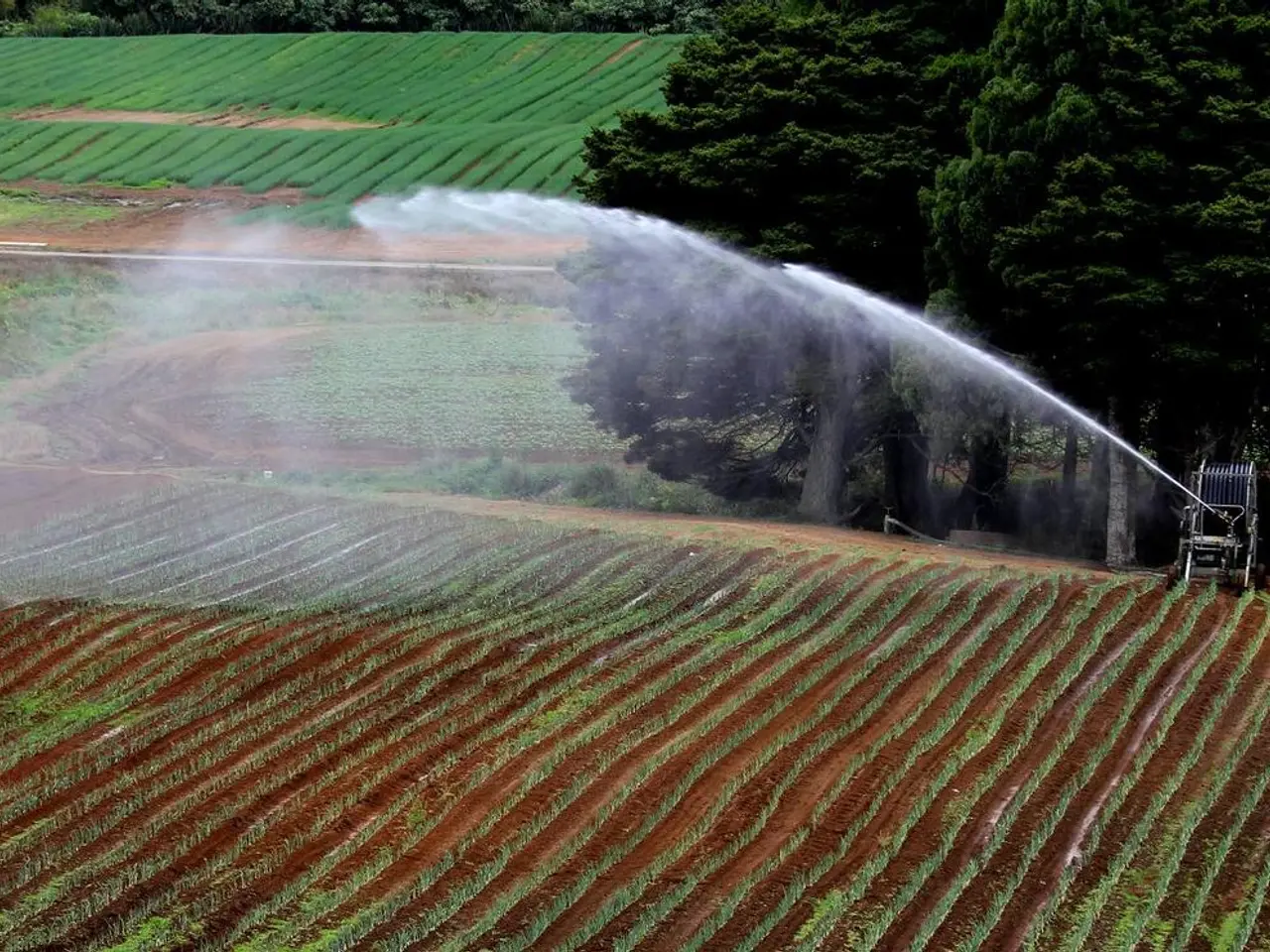Efficient Energy Usage in Sustainable Agriculture for Permaculture Methods
=====================================================================================
In the quest for a greener future, sustainable farming practices are gaining momentum. One such approach is permaculture, a method that emphasizes creating self-sustaining systems that mimic nature.
Permaculture systems, such as those at La Ferme du Bec Hellouin in France, are proving to be highly productive. These farms produce ten times more than big organic farms, demonstrating that sustainability need not compromise productivity.
The techniques employed in permaculture farming are designed to be energy-efficient. For instance, polyculture and perennial planting involve growing diverse, complementary plant species together, reducing soil disturbance and maintaining productivity with fewer external inputs.
Soil health improvement, through the use of composting, mulching, nitrogen-fixing plants, and soil restoration methods, enhances soil fertility naturally, reducing dependence on synthetic fertilizers. Water conservation techniques, like swales (contour ditches), mulched beds, and rainwater harvesting, precisely channel and retain water, reducing irrigation energy needs.
Natural pest management, which encourages natural predators and integrated pest management (IPM), lowers the need for synthetic pesticides, cutting energy used in pesticide production and application. Low-maintenance designs aim to create regenerative systems that require progressively less input and energy over time as ecological balance is restored.
In comparison to traditional farming methods, which often rely on monocultures, synthetic fertilizers, pesticides, mechanical tillage, and heavy irrigation, permaculture techniques offer several advantages. These include higher crop diversity, more natural soil management, more efficient water use, lower pest control requirements, and less energy consumption.
Agroforestry—often integrated into permaculture—further boosts energy efficiency by combining trees, crops, and livestock on the same land. This approach improves carbon sequestration, soil fertility, and biodiversity while lowering input needs.
Technological advancements in precision farming, smart farming, and AgTech are also changing how farmers manage energy. Tools like GPS-guided tractors and drones help farmers use resources wisely, while automated irrigation systems use advanced algorithms and green energy to manage water well and cut down energy needed for pumping and distribution.
Renewable energy, such as solar and wind, is becoming increasingly important for farming. Solar panels are a top choice for farmers, allowing them to generate their own electricity and lower their energy costs. IoT sensors across the farm track soil, climate, and more, giving farmers real-time data to optimize irrigation and fertilization.
Government support can also play a crucial role in promoting energy-efficient farming. This includes resource optimization initiatives, such as subsidies for renewable energy, grants for water conservation, and tax breaks for sustainable farming.
In the United States, programmes like the USDA Beginning Farmer Development Program, the USDA's Urban Agriculture Programs, the Sustainable Agriculture Research and Education (SARE) program, and the USDA Natural Resource Conservation Service (NRCS) offer education, mentoring, technical assistance, financial assistance, loans, and grants for farmers.
The 2018 farm bill in the U.S. also helps family farmers and ranchers improve soil health and fight climate change. Supportive policies and incentives are key for adopting sustainable agriculture and low-carbon farming practices.
As more farmers adopt these methods, farming will become a key player in a greener future. By using eco-friendly cultivation techniques, farmers can cut energy use and lower costs, making farming a profitable and sustainable venture.
References:
[1] Altieri, M. A., & Nicholls, C. I. (2011). Agroecology: The science of sustainable agriculture. Oxford University Press.
[2] Jones, R. (2015). The energy costs of a meal: A life-cycle assessment of food production. Energy Policy, 81, 69-77.
[3] Milne, B., & Hemenway, T. (2013). Permaculture: A practitioner's guide to small-scale intensive systems. Tagari Publications.
[4] Pretty, J. N. (2015). Agroecology and the challenge of feeding the world. Philosophical Transactions of the Royal Society B: Biological Sciences, 370(1669), 20140125.
- Permaculture farming, like at La Ferme du Bec Hellouin, demonstrates that regenerative systems can be highly productive without compromising sustainability.
- Techniques in permaculture, such as polyculture and perennial planting, encourage energy-efficient methods by reducing soil disturbance and maintaining productivity with fewer external inputs.
- Soil health improvement through composting, mulching, nitrogen-fixing plants, and soil restoration methods plays a significant role in enhancing soil fertility naturally.
- Water conservation techniques, including swales, mulched beds, and rainwater harvesting, help manage water efficiently by precisely channeling and retaining water.
- Natural pest management, which promotes natural predators and integrated pest management (IPM), reduces the need for synthetic pesticides, thereby cutting energy used in their production and application.
- Agroforestry, integrated into permaculture, improves energy efficiency by combining trees, crops, and livestock on the same land, boosting carbon sequestration, soil fertility, and biodiversity.
- Technological advancements in precision farming, smart farming, and AgTech, such as GPS-guided tractors, drones, and automated irrigation systems, help farmers manage resources wisely and cut down energy needed for farming.
- Renewable energy sources like solar and wind power are becoming essential for farming, allowing farmers to generate their own electricity and lower energy costs.
- IoT sensors across the farm track soil, climate, and other factors, providing farmers with real-time data to optimize irrigation and fertilization, thus improving energy efficiency.
- Government support, including resource optimization initiatives, subsidies for renewable energy, grants for water conservation, and tax breaks for sustainable farming, can play a crucial role in promoting energy-efficient farming practices.
- Programmes like the USDA Beginning Farmer Development Program, the Sustainable Agriculture Research and Education (SARE) program, and the USDA Natural Resource Conservation Service (NRCS) offer support to farmers, encouraging the adoption of sustainable agriculture and low-carbon farming practices.




